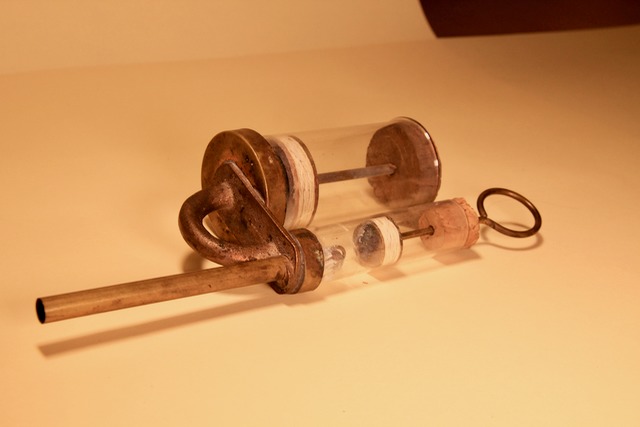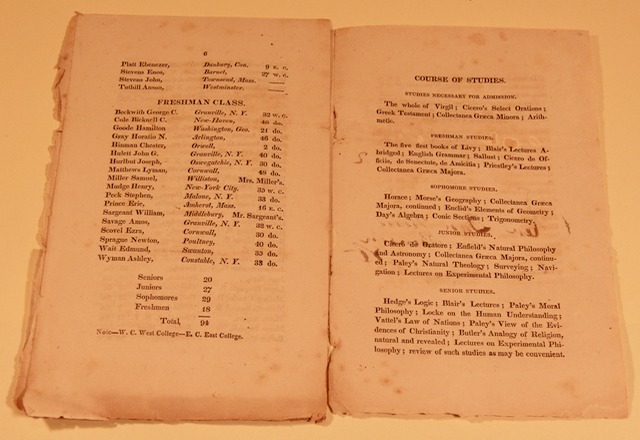How it works and its use at Middlebury
This device would have been connected to a bell jar and the pump would allow for the air to be slowly sucked out of the jar, eventually creating a vacuum inside (Sprague, 1856, 116).
One way in which Frederick Hall demonstrated vacuum, as the non-presence of air, was by the Bacchus in Vacuo experiment (Greenslade, 1975, para. 2). A figurine, especially one that looks like a human being, was put inside the bell jar and a glass tube that looks like a straw connected this figurine to a barrel with two divided parts. One part was open to atmospheric pressure while the other part was closed with a colored liquid and small portion of air in it. When the jar was exhausted and vacuum was created, air inside the barrel expands due to the decreased air pressure outside of the barrel, which causes the colored liquid to shoot up the glass tube into the figurine (Sprague, 1856, 116). In addition, the figurine, which had tight rubber bag with air inside expands and the body of the figurine swells (Sprague, 1856, 116). This was evidence that the outside air pressure (inside jar) that was present before exhaustion was now gone.
Interestingly, a Kenyon Physics department website says that “this pneumatic demonstration is in the Smithsonian collection, and came from Middlebury College in Vermont” (Greenslade, 1975, para. 1). Hall must have been the one using this demonstration to teach his students. Based on the Catalogue of the College, it’s probable that this kind of demonstration was conducted in Junior and Senior year courses called “Lectures on Experimental Philosophy,” or “Enfield’s Natural Philosophy and Astronomy” (Middlebury College Course Catalogue, 1818).

